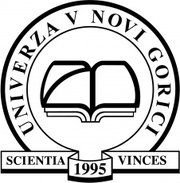Atmospheric remote sensing for Cherenkov Telescope Array and its impact on science from large sky survey observations J1-3011
Duration: 01.10.2021 - 30.09.2024
Project type: ARRS research project
Cosmic very high-energy (VHE, E ≥ 30 GeV) gamma rays carry crucial and unique information
about the most energetic phenomena in the Universe. The most sensitive experimental approach in
VHE gamma-ray astronomy is based on simultaneous imaging of Cherenkov flashes from the VHE
gamma ray induced air showers using multiple telescopes (imaging air Cherenkov telescopes or
IACTs), and reconstruction of the primary gamma-ray properties from those images. The
construction of a new generation IACT facility, the Cherenkov Telescope Array Observatory (CTAO) with design sensitivity improved by at least an order of magnitude compared to existing
VHE instruments and extended energy coverage, will start in 2022 in the legal form of a European
Research Infrastructure Consortium (CTAO ERIC), where Slovenia will be one of the founding
members. CTA is expected to enable the detection of more than 1000 new VHE gamma-ray
sources over the whole sky.
Since the atmosphere is used as a CTA calorimeter, atmospheric monitoring and the understanding
of atmospheric processes is of paramount importance for its operation and the achievement of its
science goals. The evolution of the main aerosol characteristics is extremely complex and requires
the use of remote-sensing instruments, for example a Raman lidar. Laser light emitted by the lidar
directly interacts with the atmospheric constituents and provides in its backscattering return the
footprint of atmospheric ingredients as a function of altitude. A Raman lidar is foreseen in the CTA
baseline configuration, to determine atmospheric transmission from each point along its line-of-sight
to ground up to distances of 30 km, and to provide the required improvement in reducing systematic
uncertainties and increasing the duty cycle for the CTA observatory, compared to the current
generation of Cherenkov telescopes.
Development and implementation of a Raman lidar for CTA is the primary aim of the proposed
project, which directly contributes to the official “CTA Pathfinder” for the CTA North observatory
at La Palma, Spain. The lidar prototype is being developed by an international team consisting
researchers from Institut de Física d’Altes Energies, Spain, Universitat Autònoma de Barcelona,
Spain, University of Nova Gorica, Slovenia and INFN sezione di Padova and Università degli studi
di Padova, Italy. Our lidar device is regarded as the prime candidate for the future in-kindcontribution
of a “Raman lidar” as foreseen in the CTAO technical documentation. The Barcelona
Raman lidar system is therefore a crucial part of the CTA architecture.
In addition to lidar development and its integration into the CTA Observatory the second aim of the
project is to study the atmosphere-induced systematic uncertainties, which are expected to be
particularly important for the all sky surveys with the CTA. These surveys, providing an unbiased
view of the Universe at energies above tens of GeV, will be crucial in the search for the
extragalactic ‘‘dark accelerators’’. To optimize the time needed to perform these surveys, a socalled
”divergent mode” of the CTA was proposed as an alternative observation strategy to the
traditional parallel pointing in order to increase its instantaneous field of view. The project will focus
on performance and systematic uncertainty estimation for possible CTA divergent mode setups.
Both project goals address necessary steps for the construction and early-operation of the CTA and
represent a critical part of Slovenian contribution to CTAO.


